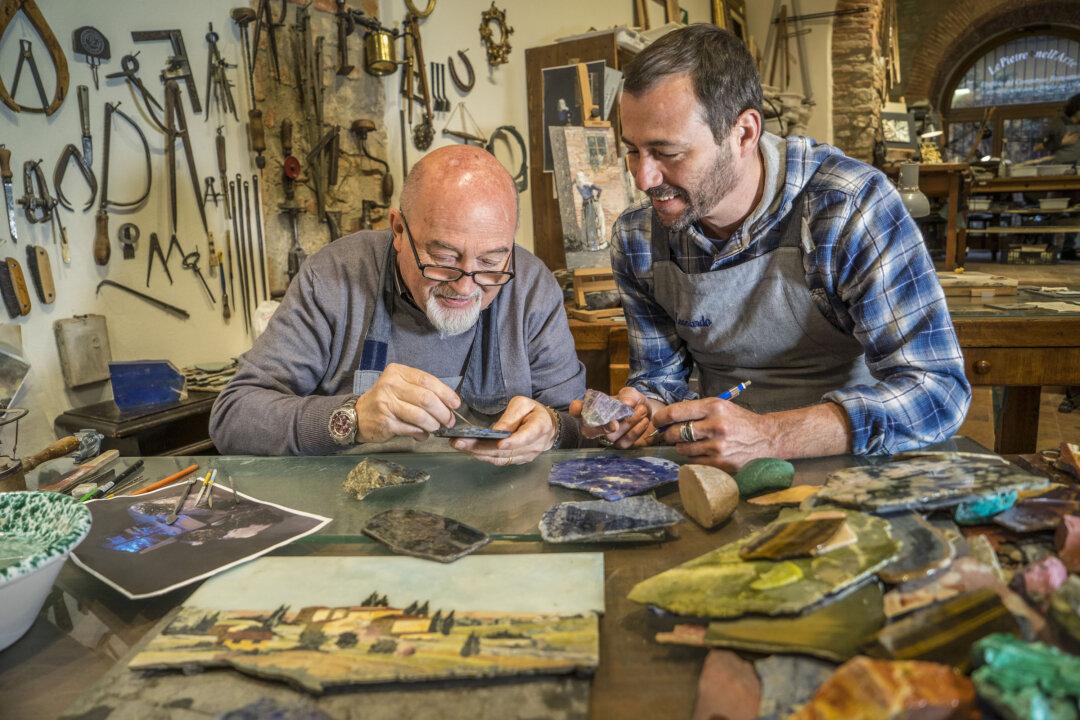Renzo Scarpelli is one of only a few mosaic artists specializing in “commesso Fiorentino” or Florentine mosaic. He started learning how to make the semiprecious stone mosaics at the tender age of 13, at one of Florence’s oldest workshops.
The first recorded piece of commesso Fiorentino was in the late 14th century, but it wasn’t until the 16th century that it gained popularity through the Medici family. First, the second grand duke of Tuscany, Francesco I, commissioned Italian mannerist painters to make commesso, or “pittura di pietra,” paintings in stone. Then in 1588, Ferdinand I, the third grand duke of Tuscany, opened the Opificio delle Pietre Dure (hard stone workshop), which was purely for commesso work.






